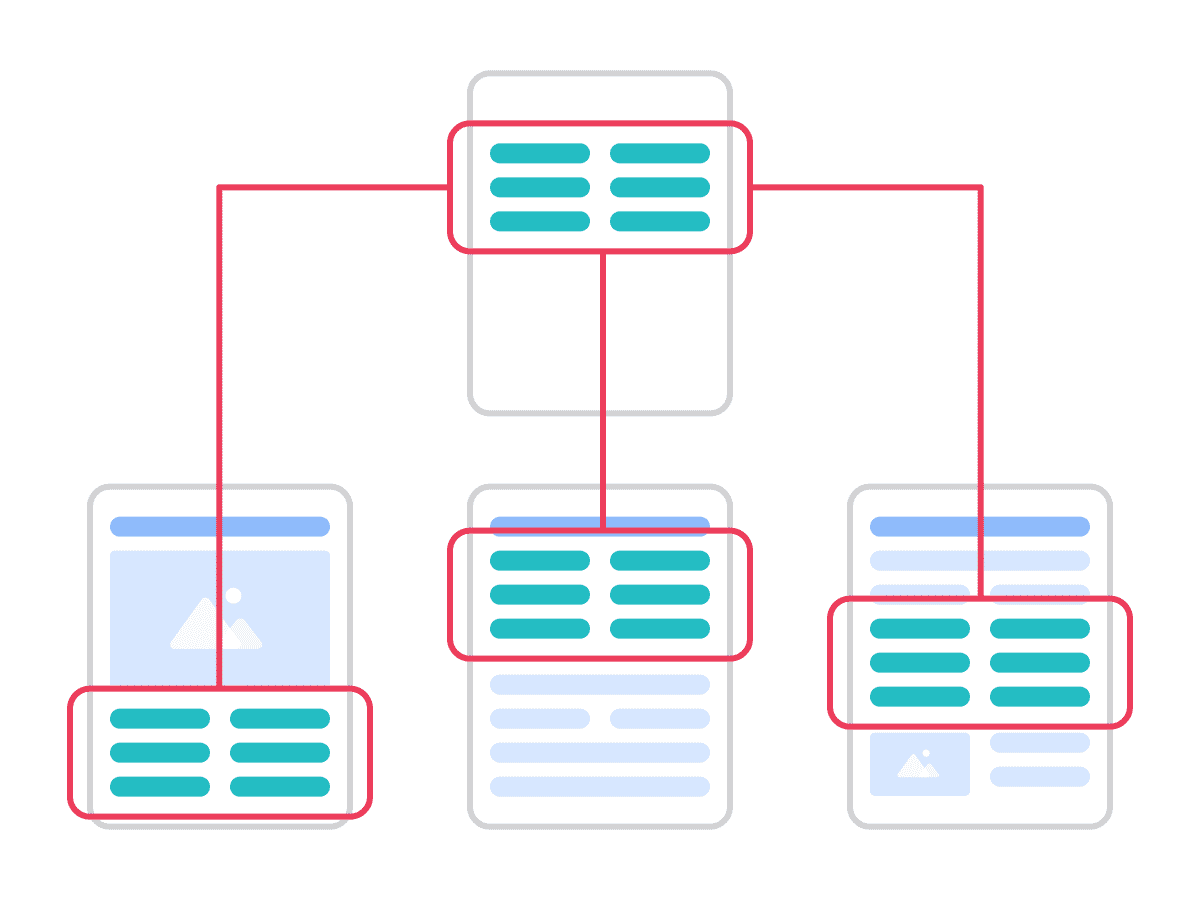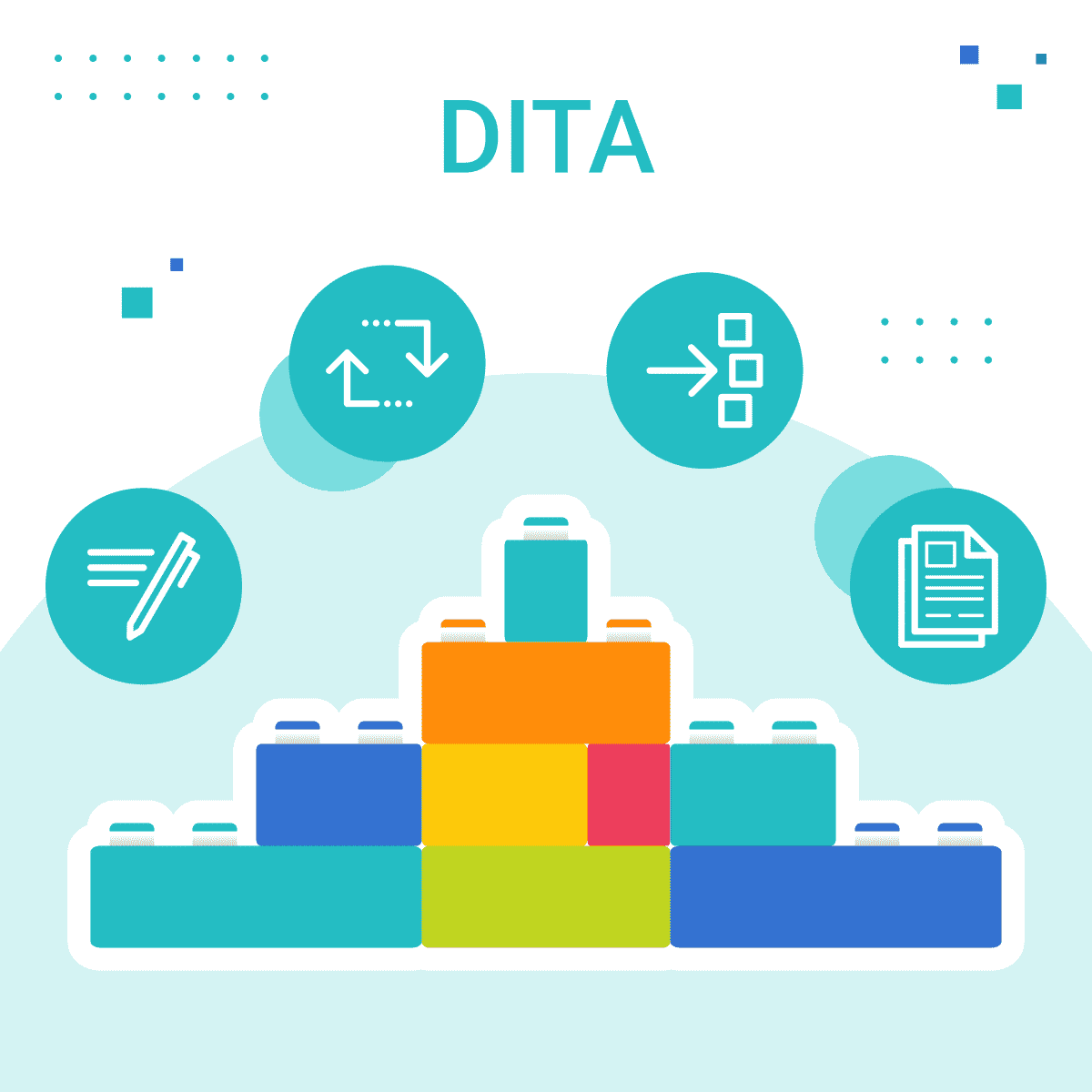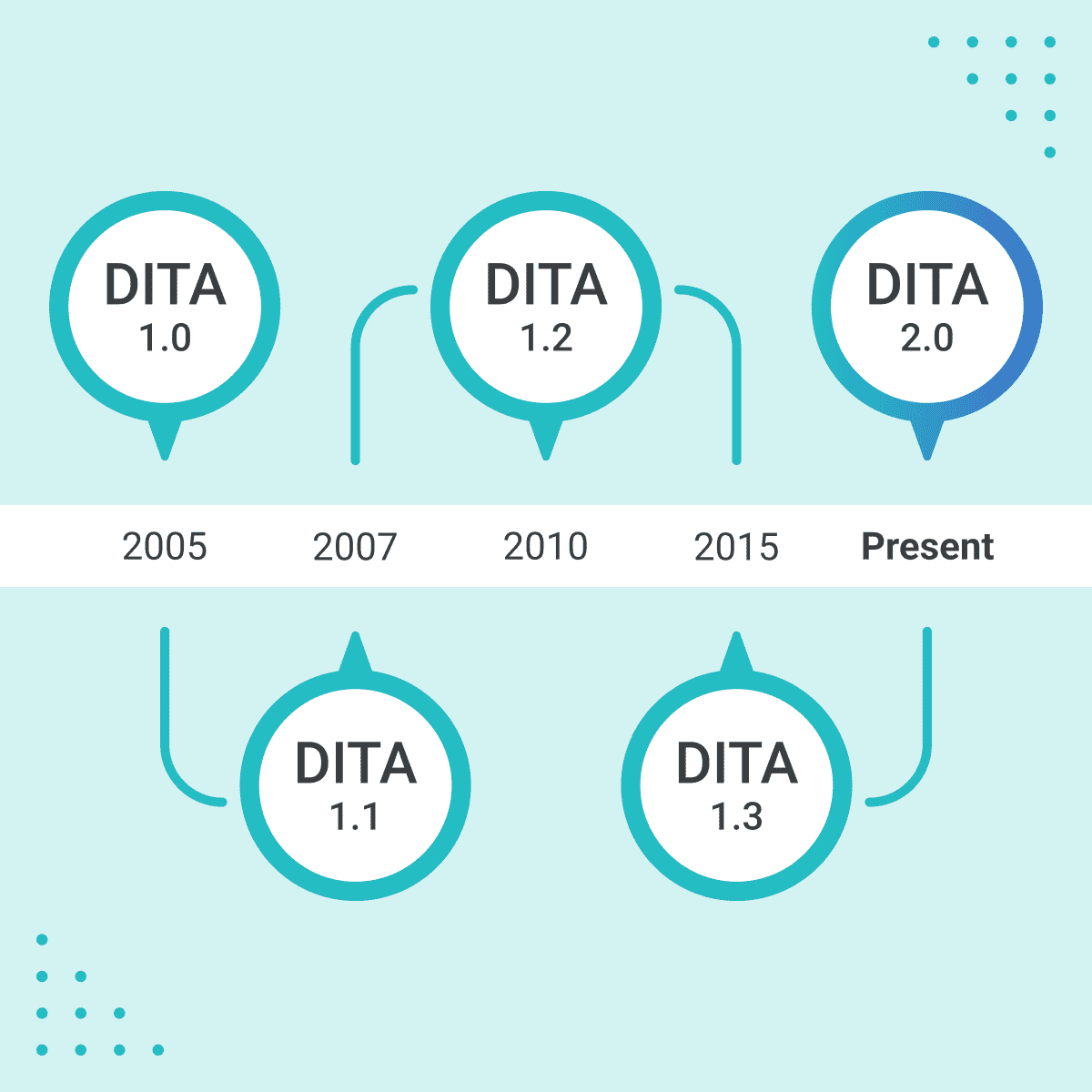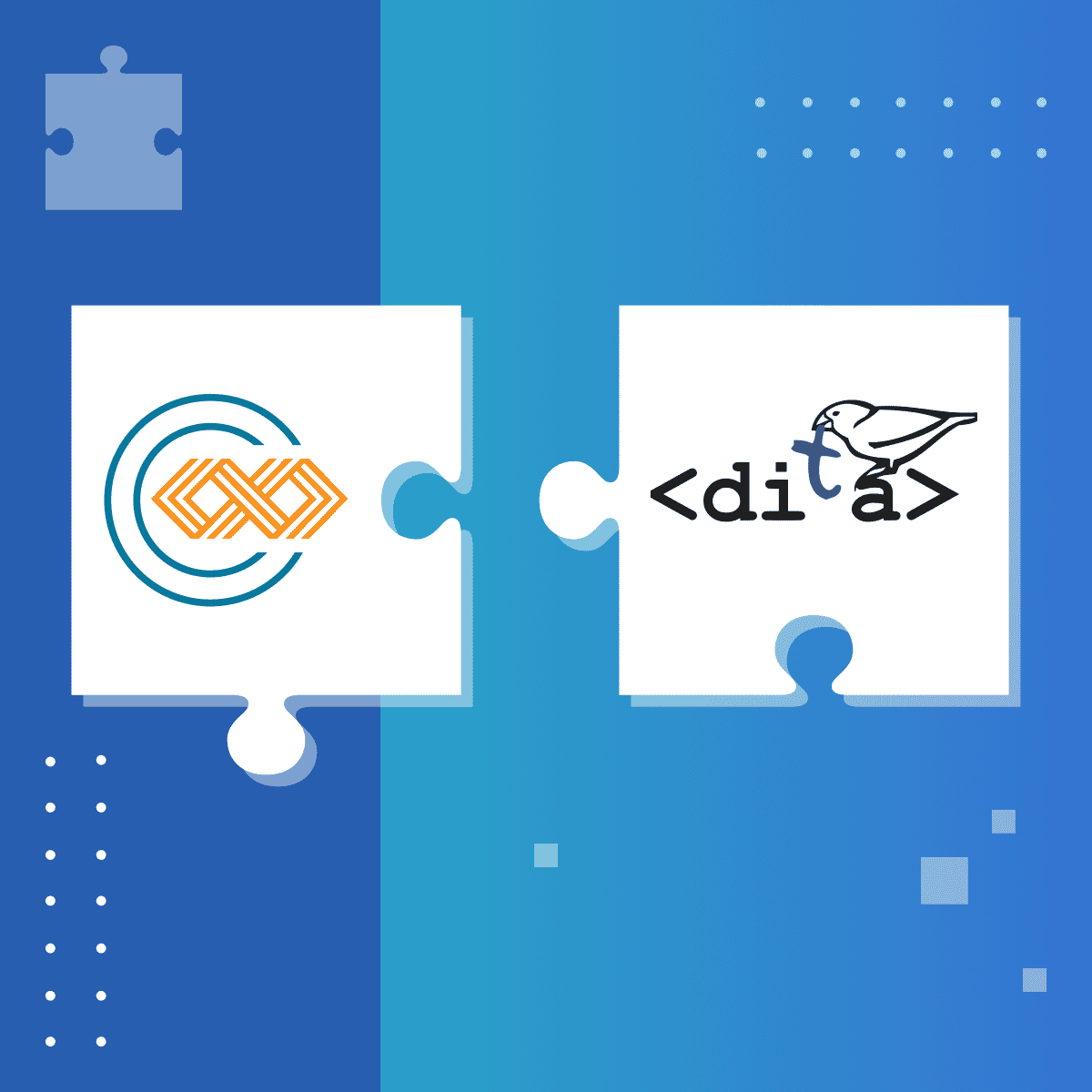Technical documentation professionals face many challenges, some of which are comprehensively answered by implementing DITA-capable CCMS. The structured nature of this OASIS standard offers many advantages for content creation and management, especially for firms that are regulated or have strict processes and procedures.
For example, in the life sciences and medical device manufacturing sectors, DITA's structured content is key for meeting strict regulatory documentation standards with precision and clarity. But what is DITA? It's an open structured content standard that helps manufacturers streamline updates to stay in step with changing regulations. Thus, easing the burden of document creation and maintenance, and combined with a CCMS, allows a level of traceability that is unmatched by other systems.
Sectors like software and general manufacturing benefit differently from DITA. Here, the focus shifts to efficiency and scalability. DITA enables a unified documentation framework that can accelerate go-to-market schedules by improving updates to multiple variants of technical documentation and maximizing content reuse. Software firms benefit from swift documentation revisions mirroring software updates, enhancing user experience, and reducing market lead time. Manufacturing benefits from DITA's modular approach, facilitating the quick creation of consistent documentation across various product lines, and reducing translation costs, to give a couple of examples.
Challenges in managing technical documentation
Inconsistent Content Quality
Inconsistent content quality in various documents often stems from the absence of standardized documentation. The results of this can include a poor customer experience when consulting documentation, increased service center costs, and potential damage to the brand's reputation. It can also result in higher rates of product use errors or misunderstandings, which could seriously affect customer safety.
Time-Consuming Updates
You can have inefficient content update processes, especially when the same information is scattered across multiple documents. This will have an impact on the go-to-market dates and strategy. Manually searching for and updating each instance of outdated content across multiple documents and versions is not only time-consuming but also leaves you prone to human error. Visible defects can be easy to spot, but what about invisible defects that are introduced because of a poorly pasted paragraph? Finally, the time, resources, and effort spent on these manual processes will divert attention from more strategic, higher-level tasks of content improvement. That improvement opportunity will stay just that, an opportunity. These kinds of avoidable delays can have a very negative impact on a company's competitive advantage.
Difficulty in Content Reuse
In trying to cope with increasingly complicated documentation requirements, bottlenecks in the process arise as content complexity and volumes go up. This means that if a company is not able to scale efficiently, it will experience huge delays in launching new products or updating old ones. This lack of flexibility within the organizational environment may also hinder expansion into new markets, product variety, or detailed addressing of customer issues. Overall, there are several problems associated with this limited scalability.

Limited Scalability
Struggling to adapt to the growing volume and complexity of documentation needs many organizations are turning to advanced content management solutions for streamlined, efficient handling of their documentation processes. As the volume grows, bottlenecks in existing systems and processes can become overwhelming. An inability to scale efficiently can lead to significant delays in product launches or updates. It can also lead to an inability for the organization to enter new markets, diversify their product lines, or even address customer issues effectively. In the long term, this limited scalability can impede the ability for an organization to grow and innovate, as it will not be able to keep pace with evolving business needs and market demands.
Escalating cost of translations
As content volume grows, the cost of translating documentation into multiple languages will usually skyrocket, especially if the content is not optimized for efficient localization. Without a streamlined translation process, companies will find that they repeatedly translated similar or overlapping content, leading to unnecessary expenditures. In addition, a lack of consistency in the source content can result in higher translation costs. Translators spend additional time deciphering the multiple meanings for a term or phrase and even more time aligning the translated segments in their translation memories.
Advantages of DITA
One of the pivotal advantages of DITA lies in its status as a standardized architecture, a feature that has the support of industry leaders. This standardization is not just a mark of quality and reliability; it fosters interoperability across diverse systems and processes. This aspect of DITA is crucial for organizations looking to integrate their content management strategies seamlessly with existing infrastructures. By virtue of being recognized as standard, DITA opens doors to a comprehensive ecosystem of solution providers. This ecosystem offers a wealth of tools, resources, and community support, enabling organizations to leverage DITA's full potential in their documentation and content management. Compared to other structured content markup languages, this widespread adoption and support makes DITA a strategic choice for companies aiming to align with industry best practices and optimize their content management processes.
Timeliness and Ease of Updates
The streamlined and efficient structure of DITA helps to ensure rapid content updates, eliminating the typical hassles associated with content management. This agility allows organizations to keep pace with market changes and customer needs. The single-source approach of updating in one place also reduces the workload on content teams, allowing them to focus on creating new content rather than constantly revising existing material.
Consistency Across Documents
Crucial for presenting a unified face to the audience, DITA ensures brand alignment and uniformity across all documentation. From unified publication parameters to document-structure templates and content reuse by reference and variables, DITA reuse mechanisms can help reinforce brand identity and enhance the user experience. Customers receive reliable and coherent information regardless of the document they refer to. It also minimizes the risk of conflicting information, which can confuse customers and harm your brand's credibility.
Omnichannel Delivery
The semantic structure of DITA ensures content fluidity and relevance across various platforms, from mobile to web and even emerging channels like chatbots and AI. Organizations can better train their chatbots with content that is structured and understandable. Metadata incorporated in the content provides context for training artificial intelligence. Interaction with the content delivery mechanism, be in a chatbot, a dedicated CDP (Content Delivery Portal), or the search engine of online help, will provide even more intelligent, precise, and granular levels of responses to customers and staff alike.
This capability guarantees that users receive the information they need whenever and wherever they need it, enhancing the overall customer experience and engagement.
Maximized Content Reuse
DITA's ability to reuse content blocks eliminates repetition, thereby improving both productivity and uniformity. This not only streamlines the content creation process but also ensures consistency across different platforms and documents. It reduces the time and resources spent on creating new content from scratch, leading to more efficient content management.
Cost-Effective Global Outreach
DITA's structure is conducive to easier translations, enabling organizations to reach a global audience without incurring excessive costs. This efficiency in localization reduces the barriers to international market entry and ensures that content is accessible and relevant to a diverse global audience.

Compliance, Auditing, and DITA
The structured and tagged nature of DITA content is invaluable for compliance, auditing, and reporting, which is crucial in many regulated industries. This level of tracking becomes substantially easier and more accurate with DITA's structured format. Combining DITA with a Component Content Management System (CCMS) further amplifies DITA's capabilities. It allows for quick location, review, and verification of specific content pieces. A CCMS enhances oversight where content changes must be meticulously logged, reviewed, and approved. This combination is ideal for effective change management, as it allows for detailed tracking of every content modification. The structured nature of DITA means the content is not just stored in the CCMS but also meticulously tagged and categorized.
Reporting Made Easy
Regular reporting, a mandate for many regulated induAIstries, becomes substantially easier with DITA. Given its structured format, generating detailed reports, be it for internal reviews or regulatory submissions, is straightforward and accurate. When the auditors come knocking, instead of sifting through mountains of data, documentation teams can quickly locate and prove the ancestry-specific content pieces, showing when, why, and who made any changes and any links to official change requests. Relationships between regulatory requirements and their content pieces can be extracted, proving that regulatory standards are maintained.
Ideal for All, Not Just the Regulated
While the benefits for regulated industries are evident, any organization aiming for precise content management will find this combination invaluable. Whether it's for internal clarity, customer communication, or potential future regulations, being prepared is always advantageous.
Semantics in DITA: The Bridge Between Human and AI Understanding
Machine Learning and AI models thrive on clear, structured data. The richer the semantics, the easier it is for these models to learn, understand, and predict outcomes accurately. DITA, with its clear semantic structures and predictability, presents an excellent framework for training these models.
The prominence of AI and machine learning today necessitates clarity in content like never before. The predictability and clarity of DITA content enhances the performance of AI models, allowing them to generate accurate, contextually relevant responses and create engaging interactions. The semantics embedded in DITA content using metadata and element attributes make it easily understood and interpreted by humans and machines. It's like teaching your AI new words in a language they understand better, enabling more accurate, contextually appropriate responses. Adopting DITA means you are effectively preparing training materials for your chatbots and generative AI models.

Conclusion
The case for DITA is undeniably strong. Its structured, semantic approach, especially when combined with a robust CCMS, ensures that organizations are not just meeting their present needs but are also future-proofed against evolving requirements and regulations. For any documentation manager, this isn't just a choice—it's the next step in content evolution.
The adoption of DITA (Darwin Information Typing Architecture) by major companies like IBM, Siemens Healthineers, Cisco Systems, Boeing, and SAP underscores its effectiveness in transforming documentation processes. These organizations have demonstrated significant reductions in content creation, maintenance, and translation costs, highlighting DITA's role in enhancing content management efficiency.
The benefits of DITA in combination with a CCMS resonate across different industries. Improved user experiences due to the constant and structured presentation of information, reduced localization costs due to shorter segments of information and reuse, and enhanced team collaboration by delivering content in a shared central repository are just some of the more obvious advantages. The consistency and efficiency brought about by DITA adoption can result in substantial cost reductions and improved content quality. This makes a compelling business case for the implementation of DITA in technical communication and content management processes.










